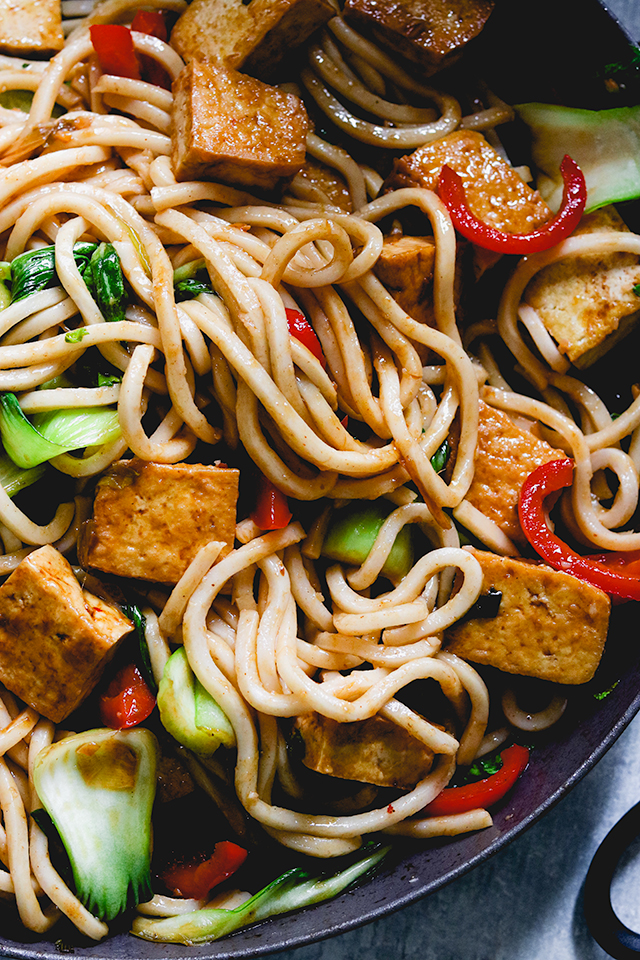
Yesterday’s lunch. I have become fond of both the Chinese doubanjiang and the Korean gochujang and think either would work for this dish. Gochujang is sweeter so you might not want to add sugar or maple syrup if you use that type of fermented bean paste. You can find either on Amazon, if you do not have an oriental market nearby. Be careful gochujang can be addictive. I just used it to make toasted cheese sandwiches this week and they were incredible. It seems that a lot of Korean cooking adds cheese. I am not sure if that is a fusion thing or not, but the ever present Korean chili powder or flakes (gochugaru) seems to go very well with mild gooey cheeses. If you can’t find the udon noodles, I am sure this would be equally good with rice. I would also add other vegetables like snow peas, carrots, or broccoli. The original recipe said it makes four servings, but I halved the tofu and veggies and kept all of the sauce and seasonings and it was one big meal with a lot of sauce.
1 (14-ounce) package extra-firm tofu, drained and patted dry
1 Tablespoon avocado oil
Salt and black pepper
1 tablespoon doubanjiang or chili oil
2 garlic cloves, peeled and finely chopped
1 (1-inch) piece ginger, peeled and finely chopped
4 scallions, trimmed, white and green parts separated and cut into 1-inch pieces
1 red bell pepper, stem and membrane removed, cut into 1-inch pieces
2 teaspoons Shaoxing wine or sherry (optional)
4 baby bok choy, trimmed and halved through the stem
SAUCE
2 tablespoons soy sauce
1 tablespoon vegetarian stir-fry sauce or oyster sauce
1 teaspoon potato starch, 1/3 cup water
1/2 teaspoon granulated sugar or maple syrup
UDON NOODLES
Tear tofu across into bite-size pieces or cut into 1-inch (or smaller) cubes
Heat a large (12-inch), deep-sided nonstick or well-seasoned cast-iron skillet on medium-high. When hot, add oil and swirl to coat the base. Season tofu with a little salt and black pepper, and fry for 6 to 8 minutes until golden and crispy, flipping or stirring to cook all sides. You may use 3/4 inch thick slabs of tofu instead of irregular pieces, but the rough edges are more crispy. Remove tofu from the skillet and set aside on a plate.
Combine the soy sauce, vegetarian stir-fry sauce or oyster sauce, starch and sugar or maple syrup with water. Whisk until smooth.
Boil frozen udon noodles for 1-2 minutes and drain and rinse with cold water to stop cooking.
In the same skillet over medium heat, add the doubanjiang or chile oil (if you’re using doubanjiang, add about 1 teaspoon of neutral oil) and stir for 15 seconds. Add the garlic, ginger and white parts of the scallion, and toss for 1 to 2 minutes, until the scallions are softened and everything is fragrant. If the pan starts to look dry, add a drop of oil.
Add the bell pepper and Shaoxing wine or sherry, if using, and stir-fry for 2 to 3 minutes until slightly softened. Pour in the seasoning sauce and let it sizzle for 30 seconds, stirring once or twice. Doubanjiang will blend in sauce.
Add the baby bok choy, tofu, cooked noodles, and green parts of the scallion, toss gently to coat the tofu and noodles. Let it simmer on low heat for 1 to 2 minutes until the sauce thickens, the baby bok choy is wilted but still green and crisp-tender, and the tofu and noodles have absorbed some of the sauce. You may omit the noodles and serve with rice.
CLICK for another udon dish—Yaki Udon.
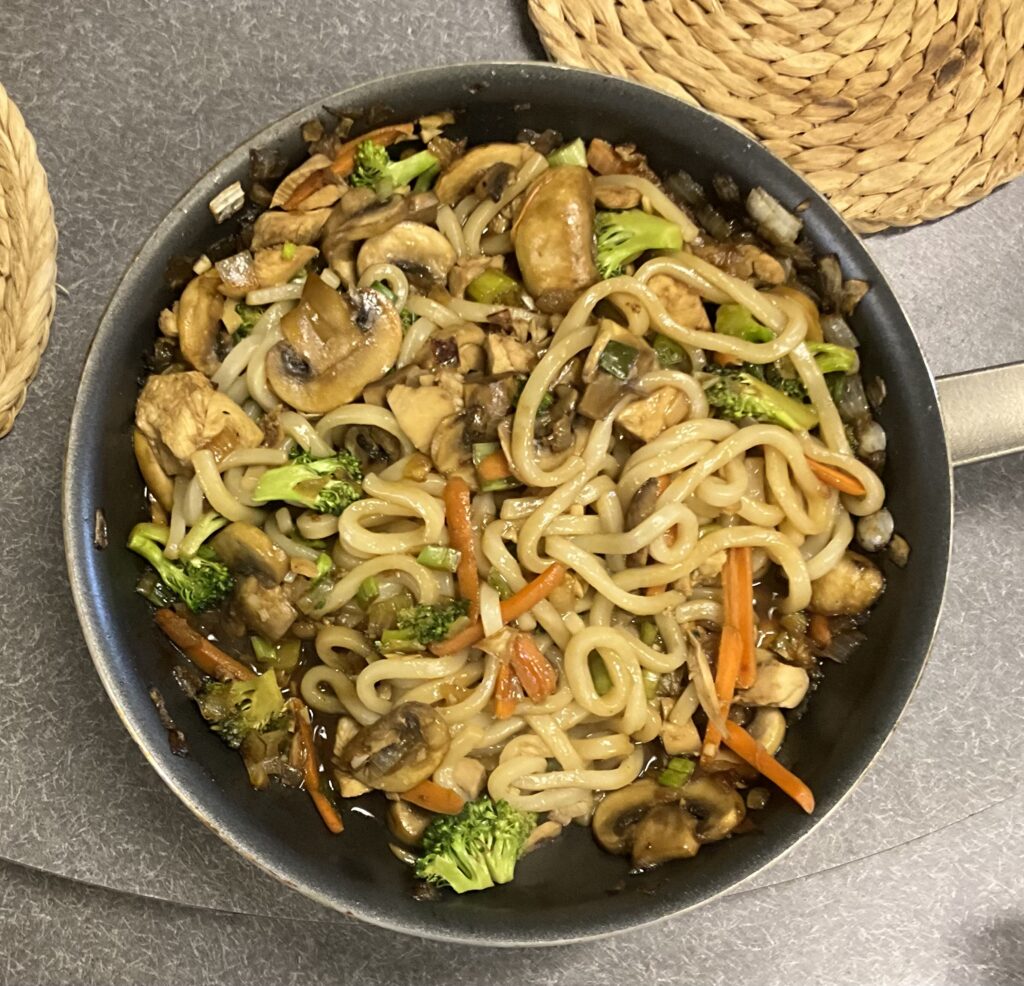

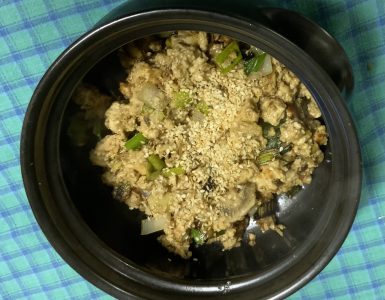
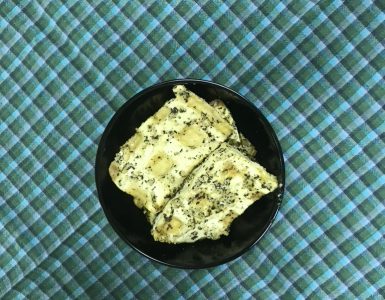
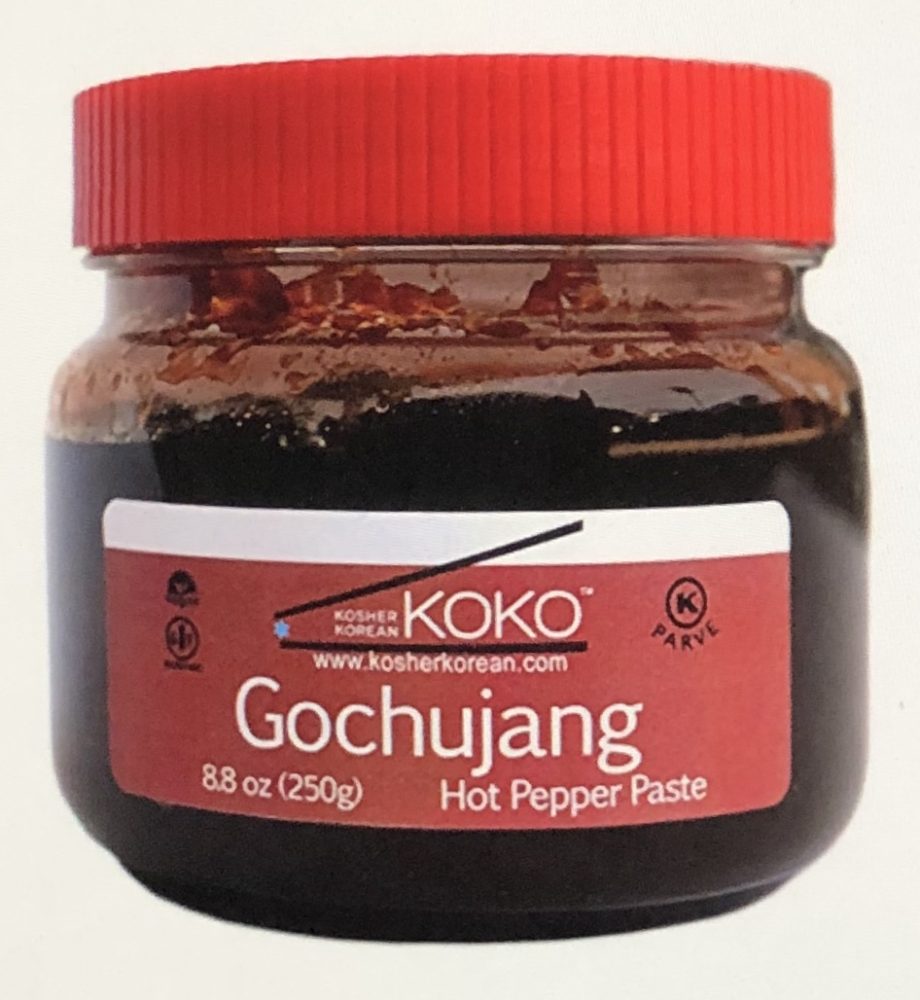

Add comment